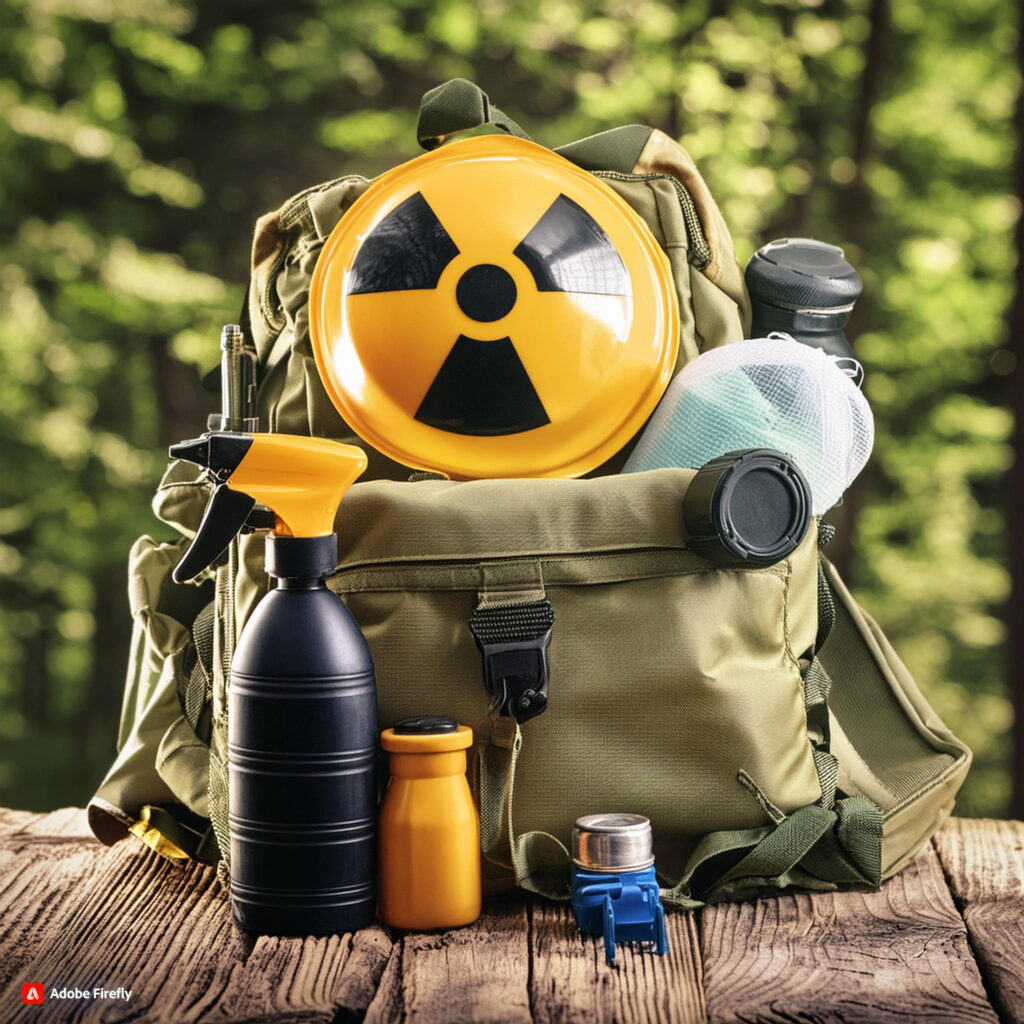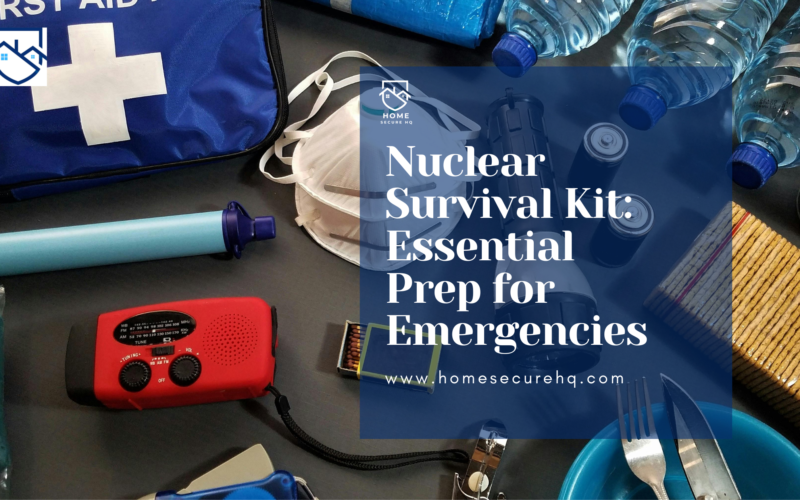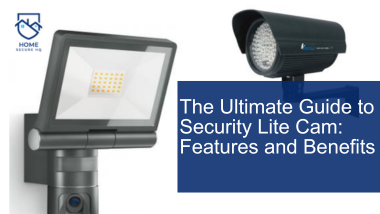Nuclear explosions can cause a lot of damage and harm from blast, heat, and radiation. But, with the right prep, you can boost your chances of making it through.
A nuclear survival kit is key for emergency readiness. It includes personal protective gear, devices to detect radiation, and other vital supplies to help you get through.
This guide will cover the main parts of a nuclear survival kit and how to be ready for now and later. We’ll look at the effects of a nuclear blast and how to build a fallout shelter.
This article aims to give you the info and tools to protect yourself and your family if a nuclear disaster happens.

Understanding Nuclear Explosions
Nuclear weapons vary from small devices to large missiles. Each type can cause a lot of damage. This includes a bright flash, a blast wave, intense heat, and radiation.
These can harm cells and cause sickness. Knowing about types of nuclear weapons and their effects of a nuclear blast helps in making a good nuclear survival strategy.
Types of Nuclear Weapons
There are several types of nuclear weapons, each with its own power and effects. These include:
- Fission bombs: These use nuclear fission to release power.
- Fusion bombs: Also known as hydrogen bombs, these weapons combine hydrogen isotopes for a bigger explosion.
- Thermonuclear weapons: These are the most advanced, combining fission and fusion.
- Tactical nuclear weapons: These are smaller, made for the battlefield.
- Strategic nuclear weapons: These are big, long-range missiles and bombs for targeting cities.
Effects of a Nuclear Blast
The immediate effects of a nuclear blast are severe. The blast can cause temporary blindness, deadly waves, fires, and damage to electronics from an electromagnetic pulse.
Long-term effects include radioactive fallout, which can be dangerous to health.
This fallout can come back to the ground over 15 minutes after the blast, making finding shelter key to survival.
Knowing about types of nuclear weapons and their effects of a nuclear blast is key to a good nuclear survival strategy.
Being aware of the risks and taking steps to protect yourself can help you survive a nuclear emergency.
Preparing Your Nuclear Survival Kit
Creating a detailed nuclear survival kit is key to keeping you and your loved ones safe during a nuclear emergency.
This kit should have various personal protective equipment (PPE) to protect against radiation, contamination, and other dangers.
Personal Protective Equipment
Your kit should include a gas mask, protective coveralls, goggles, gloves, and boots. Having extra sets of these items helps lower your risk of radiation and makes cleaning up easier.
A gas mask is especially important to protect your lungs from harmful particles in the air.
A hazmat suit is also crucial. It’s made to keep your body safe from dangerous substances, including radioactive materials.
Wearing one can greatly lower your risk of getting exposed to radiation and contaminated.
Radiation Detection Devices
Adding radiation detection tools to your kit is vital for checking radiation levels and keeping track of your exposure.
A Geiger counter, a device you can carry, measures how much radiation is around. It helps you find safe places, decide when to clean yourself, and when to leave.
Dosimeter cards also record how much radiation you’ve been exposed to, helping you stay safe.
With the right PPE and tools to detect radiation, you can better handle a nuclear emergency. Being ready can really change the outcome in a crisis.
Immediate Actions After a Nuclear Blast
After a nuclear blast, your first step is to find shelter and start decontaminating yourself. Quick and smart actions can save your life.
Finding Suitable Shelter
First, find a strong building made of concrete or brick. Stay away from places outside, cars, and mobile homes because they don’t protect you from radiation.
Move inside and go to the center or a basement to wait out the blast and fallout.
Studies show that buildings with a “Protection Factor” (PF) of 10 are safe. They cut the radiation dose by a lot.
Single-family homes without basements have a PF of 3, which helps a bit. Cars have a PF of 3 or less, so they don’t protect much from radiation.
Decontamination Procedures
Once you’re in a safe place, take off any dirty clothes and wash your skin and hair. This helps remove harmful particles.
Decontamination is key to avoiding radiation sickness and long-term health problems.
- Brush your pets and wash them with soap and water to keep them safe from fallout.
- Radiation levels drop a lot in the first few hours and weeks after an explosion.
- Wearing a mask or covering your face with a cloth can help protect you from radiation, if done right.
Doing these things right away can really help you survive a nuclear blast. It can also lessen the harm from radiation later on.
Surviving the Fallout
Radiation Exposure Risks
After a nuclear event, the fallout is a big threat to your health. Being exposed to radiation can cause sickness, from mild symptoms like nausea to severe ones like skin burns and organ failure. Long-term, it can lead to a higher chance of getting cancer and other serious diseases.
It’s important to limit your time in contaminated areas and stay in a safe shelter. The most dangerous radiation levels are right after the fallout hits and then slowly go down.
By acting fast and cleaning yourself properly, you can lower your risk of getting hurt by radiation.
- Stay inside a strong building or underground shelter for at least 24 hours, unless told otherwise by local authorities.
- Don’t go outside until the radiation is safe, which might take days or weeks.
- If you must go outside, wear protective gear like a gas mask, hazmat suit, and gloves to reduce exposure.
- Clean yourself and your things by removing and throwing away dirty clothes, and washing your body and hair well.
- Watch for signs of radiation sickness, like nausea, vomiting, or skin irritation, and get medical help if needed.
Knowing the dangers of radiation and taking the right steps can help you survive the fallout and lessen its long-term effects. Stay updated, stay safe, and be ready to protect yourself and your family.
Nuclear Survival Kit: Essential Components
In a nuclear emergency, a complete nuclear survival kit can save lives. It should have personal protective gear, devices to detect radiation, and supplies for cleaning. These items help you and your family stay safe.
The main parts of a nuclear survival kit are:
- Gas mask or respirator: Protects against radioactive particles and harmful gases.
- Protective clothing: Includes coveralls, gloves, and boots to shield your skin.
- Geiger counter: Measures radiation levels to check if it’s safe.
- Potassium iodide tablets: Blocks the thyroid gland from absorbing radioactive iodine.
- Water purification supplies: Filters, tablets, or other ways to make clean water.
- Emergency food and water storage: Non-perishable food and water for 72 hours.
It’s important to keep your nuclear survival kit up to date. Check expiration dates, replace old items, and make sure it’s easy to get to in an emergency. With the right supplies, you can better survive a nuclear disaster and protect your loved ones.

Long-Term Preparedness Strategies
Surviving a nuclear event means planning ahead. You need to have food, water, and ways to communicate ready. These are key for staying safe over time.
Food and Water Storage
After a nuclear disaster, finding food and water can be hard. Keep a lot of non-perishable food like canned or dehydrated items. Aim for three days’ worth for you and your family.
Also, have one gallon of water per person each day for drinking and cleaning. Keep it in sealed containers and check it every six months to keep it fresh.
Emergency Communication Plans
After a nuclear event, phones, internet, and TV might not work. It’s important to have a way to stay informed. Use a battery-powered or hand-crank radio for updates from authorities and NOAA.
Also, have a backup way to talk to family, like a walkie-talkie. Pick a meeting spot to stay connected during emergencies.
With good long-term plans, like storing food and having communication methods, you can better survive a nuclear disaster.
Building a Fallout Shelter
Building a fallout shelter is key to protecting yourself from radiation in a nuclear emergency. These shelters use materials like concrete, lead, or thick earth for maximum protection.
Creating one takes time and effort but can greatly increase your survival chances.
First, pick a good spot for your shelter. Think about the terrain, how close it is to targets, and how easy it is to get to. It’s smart to test the soil to make sure it’s safe for your shelter.
- Dig a trench big enough for your shelter, usually about 10 x 10 x 10 feet for a 4-person space.
- Build emergency exits and ventilation to keep air flowing and make escape easy.
- Use roofing poles, sandbags, and tarps to protect against blasts and radiation.
- Add things like composting toilets, hammocks or bunk beds, and a plan for waste to make the shelter useful.
Building a fallout shelter can take days or more, even with help from others. But, the hard work can be vital in a nuclear emergency. It can help you and your family stay safe.
High-risk areas include capitals, transport hubs, communication centers, chemical plants, and military bases. A well-made fallout shelter can shield you and your family from a nuclear disaster.
Conclusion
Getting ready for a nuclear emergency is key to disaster planning. By creating a nuclear survival kit and planning for the long term, you can protect yourself and your family.
It’s important to know the risks, have the right gear, and act fast to find shelter and clean yourself.
Always stay informed and prepared to stay safe. With the right disaster planning and radiation protection, you can handle a nuclear disaster better.
By being proactive, you keep yourself and your community safe from nuclear threats.
Being ready for a nuclear emergency means surviving the event and doing well after it. With the right tools, knowledge, and attitude, you can come out of a nuclear crisis stronger and more resilient.







